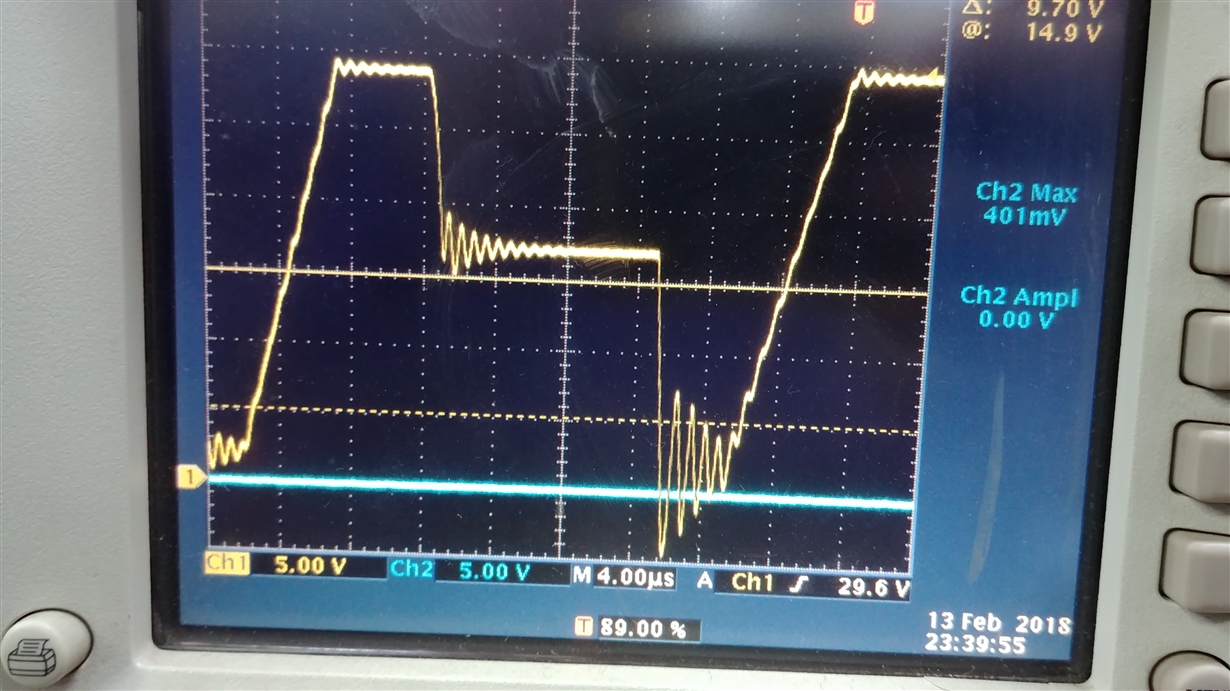Other Parts Discussed in Thread: DAC8806, OPA552
Hi, I am generating a square wave using the DAC8806. I am then driving a 4011 opamp that then drives the OPA552. In front of the opamp, the signal looks clean. The OPA552 uses a resistor gain ratio to give a 6x gain. The power rails are -9v and +41v. The DAC has a refresh time of 200ns. At ~2000ns, the square wave is clean. What can I do to get a cleaner wave? I am currently driving a 50fp CAP with the OPA552 in an effort to clean the signal. I also ordered some opa551s today. Do you have any suggestions on how to get a cleaner wave. The jitter you see is about 1us or 1MHz. The pictures are before and after the OPA552. In TINA, I could not make this noise.dac8820 positive only 30v peakB.TSC - TINA.pdf





